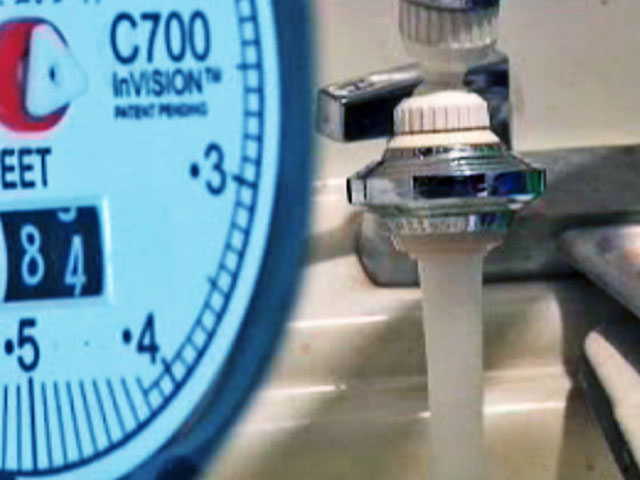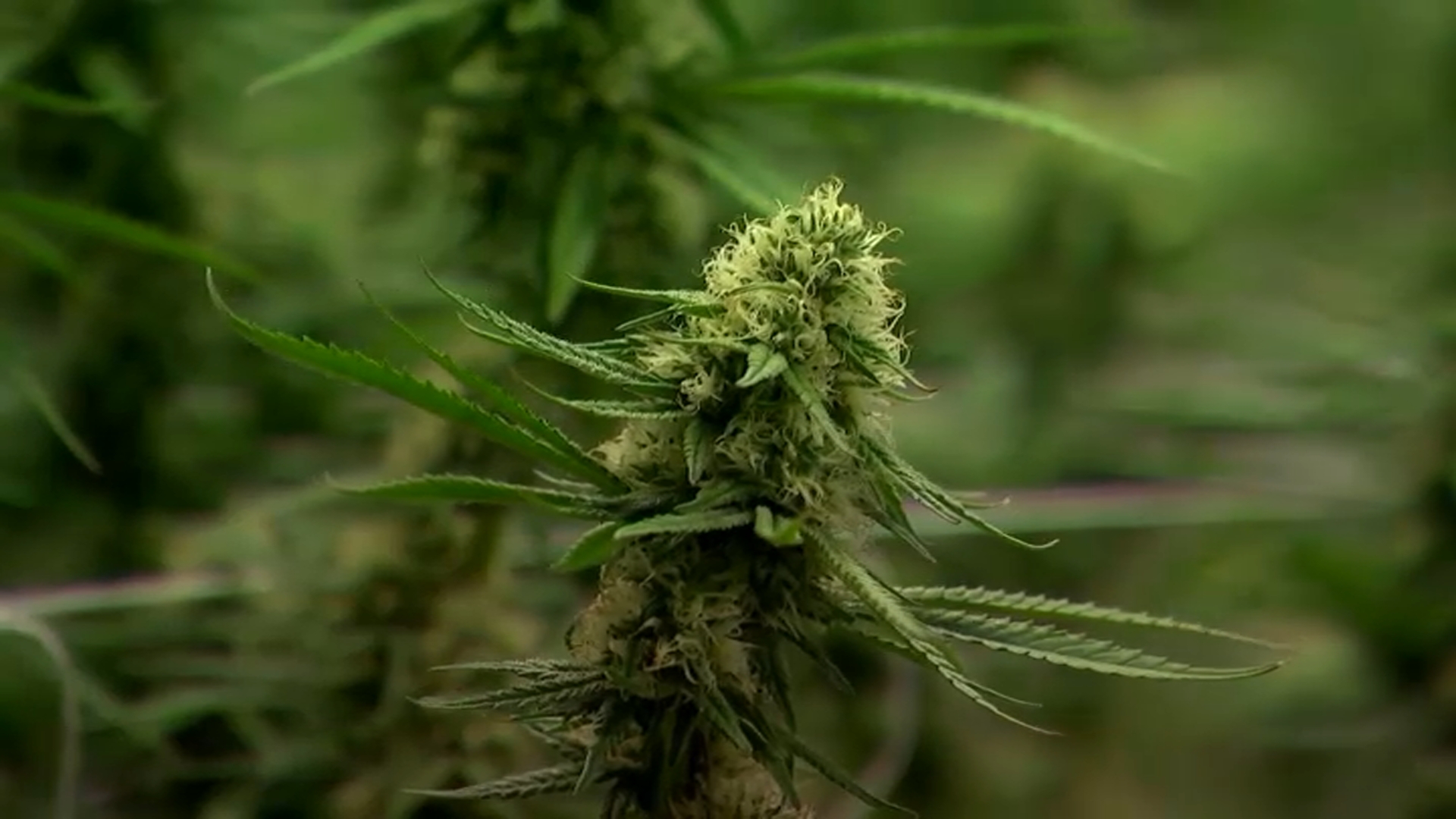The bridges don’t need to be shut down, but experts said repairs should be a high priority, reports NBC 7’s Alexis Rivas.
Most San Diegans aren’t thinking about safety when they drive, ride, or walk over one of the 136 bridges that the city is responsible for maintaining. Upon closer inspection, they may notice missing chunks of concrete in the deck, cracks in the support pillars, or even exposed rebar.
However, that’s front and center in the minds of federal inspectors with the U.S. Department of Transportation. Those structural engineers take a hard look at every bridge in the country every two years. The report card for California and San Diego reflects what they’re seeing across the country; many of America’s aging bridges aren’t in good condition.
In San Diego, 10 of those 136 bridges are rated to be in “poor” condition. Seventy-nine are in “fair” condition and 47 are in “good” condition. You can learn more about the 10 bridges classified as poor at the bottom of this article.
10 San Diego Bridges Classified as “Poor”
Get top local stories in San Diego delivered to you every morning. Sign up for NBC San Diego's News Headlines newsletter.
“A poor [score] may mean there is some deterioration of the bridge,” Andrew Herrmann told us. He’s a former chapter president of the American Society of Civil Engineers with more than 40 years of history inspecting bridges.
Herrmann says a poor rating essentially puts a bridge on high alert. It's still safe, but that won’t be true much longer if it doesn’t get serious attention, and fast.
“That’s important,” Herrmann said. “To keep track of it and make sure it doesn’t get any worse.”
Inspectors determine the condition of a bridge based on an inspection of a bridge’s three main components; the deck, the superstructure, and the substructure.
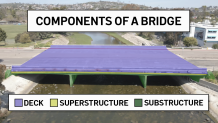
The deck is the top portion of a bridge where vehicles and pedestrians cross. Some bridge decks contribute to the stability and structure of a bridge. The superstructure of a bridge is directly below the deck and is integral to its stability. Underneath that is the substructure, which may include columns, support beams, or sidewalls that connect the bridge to the ground.
Each of these items is inspected and given a grade of 1 through 10. If any of these items are graded a 4 or below, the entire bridge is considered poor.
- 7-9 is classified as “good”
- 5-6 is classified as “fair”
- 1-4 is classified as “poor” (bridges with a 1 or 2 score are typically shut down)
In addition, bridges that are classified as culverts receive an additional grade that could result in being classified as poor. Culverts generally have shorter spans than bridges and are usually embedded in the soil.
Local
While most bridges are inspected every two years, bridges in poor condition may be examined more often. Newer bridges may be inspected at longer intervals.
“Poor does not mean unsafe,” San Diego Mayor Todd Gloria told us. “If we were aware of an unsafe condition we would take swift action to address it.”
Repairing & Replacing Aging Infrastructure
In the last few weeks, the City of San Diego gave examples of major investments being made to replace and modernize aging bridge infrastructure. That includes the replacement of the 72-year-old West Mission Bay Drive bridge that crosses the San Diego River. Before its replacement, that bridge also found itself classified as poor. The final price tag was $148 million, which was mostly paid for with federal money.
“Well, what we’re doing is putting more money than we’ve ever put into infrastructure,” Gloria told us.
On Thursday, Gloria gathered with state and federal transportation officials to announce an additional $24 million in federal money slated to make improvements to the Palm Avenue bridge that crosses Interstate 805 in Otay Mesa. That’s planned to not only strengthen the substructure against seismic disturbance but also make it more vehicle and pedestrian-friendly.
The faster you fix it the more economically you can fix it. If you let it go longer you have to do much more repair work and it costs more.
Andrew Herrmann, Structural Engineer
“I’ve often made the observation that people like to say that infrastructure is not sexy,” Gloria said. “That’s a way of saying we shouldn’t prioritize it. And unfortunately, that’s been the prevailing wisdom for really decades in the city. And the state of our roads, bridges and sidewalks reflect that.”
The mayor acknowledged repairing and replacing infrastructure isn’t cheap and relies heavily on federal funding that won’t happen overnight.
Federal highway administrators and San Diego city officials say none of these recent bridge projects would be possible without the $18.4 billion bipartisan infrastructure bill, which Congress passed back in November 2021. More than half of the federal funding up for grabs will be spent in California.
A city spokesperson told us the city is actively seeking new grants from the Bridge Preventative Maintenance Program for five bridges classified as poor. That includes:
- Main St. Bridge crossing Chollas Creek
- State Road 15 Bridge crossing Main Street
- West Mission Bay Drive Bridge over Ingraham Street
- Sunset Cliff Boulevard Bridge over the San Diego River
- Grand Avenue Bridge over Rose Canyon Creek
Herrmann says time is of the essence not only for safety but also for the price tag.
“The faster you fix it the more economically you can fix it,” Herrmann told us. “If you let it go longer you have to do much more repair work and it costs more.”
San Diego isn’t alone in its race to repair bridges. Nationally, Herrmann says over the last two inspection periods, many bridges fell from good to poor. That’s because many bridges only have a 50 year lifespan – meaning thousands of bridges built in the 70s are about to outlive their design.
The city spokesperson also went into detail about the inspection process and what it does to do minor maintenance work.
“The City of San Diego and Caltrans continue to work closely together to ensure the safety of bridges in the city. All of these bridges carry vehicle traffic and are inspected by Caltrans once every two years. The City monitors and maintains these bridges at least once every two years.
To address any deficiencies in the bridges, the City’s Street Division handles minor repair and maintenance work, which is covered by the maintenance portion of the Transnet budget. The City of San Diego allocates 30% of the Transnet fund it receives for infrastructure maintenance, including roads, bridges, streetlights, sidewalks, signals, and other transportation-related infrastructure. The remaining 70% of the Transnet fund is used for capital improvement projects aimed at reducing traffic congestion.
The Capital Improvement Program oversees major bridge repair, retrofit, rehabilitation or replacement projects in the City of San Diego. However, because these are significant bridge projects, the City relies heavily on federal and state grant funds to finance them.”
NBC 7 Investigates also reached out to Caltrans about the bridges it’s responsible for maintaining. It told us:
“California is home to more than 26,000 bridges. Caltrans is responsible for the maintenance of more than 13,000, and the rest are maintained by local agencies. Caltrans inspects every bridge in California at least every two years, and these inspectors rate bridges 'good,' 'fair,' or 'poor' based on issues such as cracks, concrete loss, and the need to repaint. Bridges are prioritized for maintenance based on their condition. A poor rating is not an indication that the bridge is unsound. The safety of the traveling public is our priority and Caltrans will take immediate action if needed.
One of the bridges on the list you provided, Viejas Creek Bridge, is part of a current road and rehabilitation project in east San Diego County. The eastbound I-8 Road Repair and Bridge Replacement construction began in July 2022 and is a two-year project that includes work on six bridges and 10 miles of road repair. The project cost is $46.6 million, with $42 million coming from the federal government and $4.6 million from the Road Maintenance and Rehabilitation Account created under voter-approved Senate Bill 1. The westbound Viejas Creek Bridge is expected to go into the environmental review phase in 2024.”
City of San Diego Bridges Classified as “Poor”
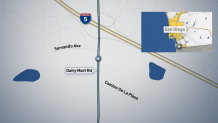
Dairy Mart Road over Mesa Creek
Age: 44 Years Old
The Federal Highway Administration says this bridge is in poor condition because its deck was rated a four. The inspector noted that the concrete deck was cracked, had exposed rebar, was missing concrete pieces (spalling), and showed signs of patching.
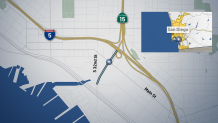
Wabash Road (SR-15) over Main Street
Age: 68 Years Old
The Federal Highway Administration says this bridge is in poor condition because its deck was rated a four. The inspector noted that the concrete deck was cracked, was missing concrete pieces (spalling), and showed signs of patching.
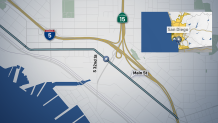
Main Street over Chollas Creek
Age: 85 Years Old
The Federal Highway Administration says this bridge is in poor condition because its substructure was rated a four. The inspector noted that pieces of concrete were missing (spalling) on 22 support columns.

West Bernardo Drive over Green Valley Creek
Age: 49 Years Old
The Federal Highway Administration says this culvert is in poor condition because it was rated a three. The inspector noted there was corrosion under the bridge with some sections showing 100% loss.
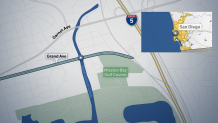
Grand Avenue over Rose Canyon Creek
Age: 66 Years Old
The Federal Highway Administration says this bridge is in poor condition because its substructure was rated a four. The inspector noted that pieces of concrete were missing (spalling) on its pier walls which also had cracks.
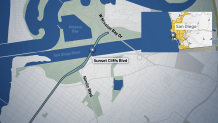
Sunset Cliffs Boulevard over the San Diego River
Age: 71 Years Old
The Federal Highway Administration says this bridge is in poor condition because its deck was rated a four. The inspector noted that the concrete deck was cracked, had exposed rebar, was missing concrete pieces (spalling), and showed signs of patching.
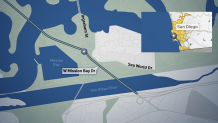
Ingraham Street Ramp over Sunset Cliffs Boulevard
Age: 50 Years Old
The Federal Highway Administration says this bridge is in poor condition because its deck was rated a four. The inspector noted that there was cracking throughout the concrete deck.
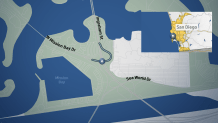
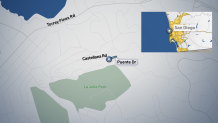
Puente Drive over Castellana Road
Age: 73 Years Old
The Federal Highway Administration says this bridge is in poor condition because its substructure was rated a four. The inspector noted that pieces of concrete were missing (spalling), there was cracking on a support arch, and there were signs of efflorescence. That’s when the dissolved salts inside the concrete crystallize on the surface. It can be a sign that the concrete is weakening over time.
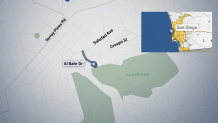
Crespo Drive over Al Bahr Drive
Age: 73 Years Old
The Federal Highway Administration says this bridge is in poor condition because its substructure was rated a four. The inspector noted that pieces of concrete were missing (spalling), there was exposed rebar in a support arch, and there were signs of efflorescence. That’s when the dissolved salts inside the concrete crystallize on the surface. It can be a sign that the concrete is weakening over time.













